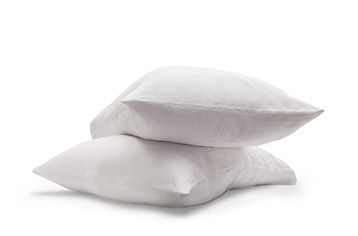Linen History

Linen textiles appear to be some of the oldest in the world. Early textiles have been found in 800 BC in Switzerland. Prehistoric linen made from wild flax may date back even earlier to 36,000 years ago!
Egyptian mummies were wrapped in linen to signal wealth. Historically banknotes and now, the dollar bill even contains linen to give strength and longevity to these paper currencies.

Today, linen is usually an expensive textile produced in relatively small quantities. It has a long fiber length relative to cotton and other natural fibers, which makes it ideal for making durable textiles.
Linen is laborious to manufacture and valued for its natural moisture wicking ability in hot and humid weather. It readily absorbs moisture without feeling unpleasantly damp. It is unique in that it is stronger wet than dry. It is stronger than cotton but less elastic. It is also lint free and resistant to moths, resists dirt and stains, and can withstand high temperatures. It has a fairly low initial shrinkage, around 10% on average.
The term “linens” has come to be used generically to refer to any textile. However, it should not be confused with the real thing. Linen is a textile made from the fibers of the flax plant. Flax is both a food and fiber crop, supplying flax seeds for consumption, and flax fibers for use in textiles. The flax plant consists of a woody exterior with the flax fiber used in textiles located just under the surface of the stem. Flax fiber resembles the appearance of blond hair, thus the description of “flaxen” hair.

Linen is valued for its long fibers, which are either hand harvested by pulling up the entire plant, roots and all, or cut very close to the root. Flax is an annual and re-seeded each year.
Traditionally, the harvested plants are dried on the field. The fibers are then loosened from the stalk through a process called retting, which uses bacteria to decompose the pectin that binds them together. Next, the process of scutching removes the exterior woody portion of the stalk.
The flax is then combed to remove the short fibers, leaving behind the long, soft flax fibers. These are then spun into yarns and at last woven into various textiles.
Wikipedia contributors. "Linen." Wikipedia, The Free Encyclopedia. Wikipedia, The Free Encyclopedia, 15 Nov. 2018. Web. 8 Dec. 2018.
